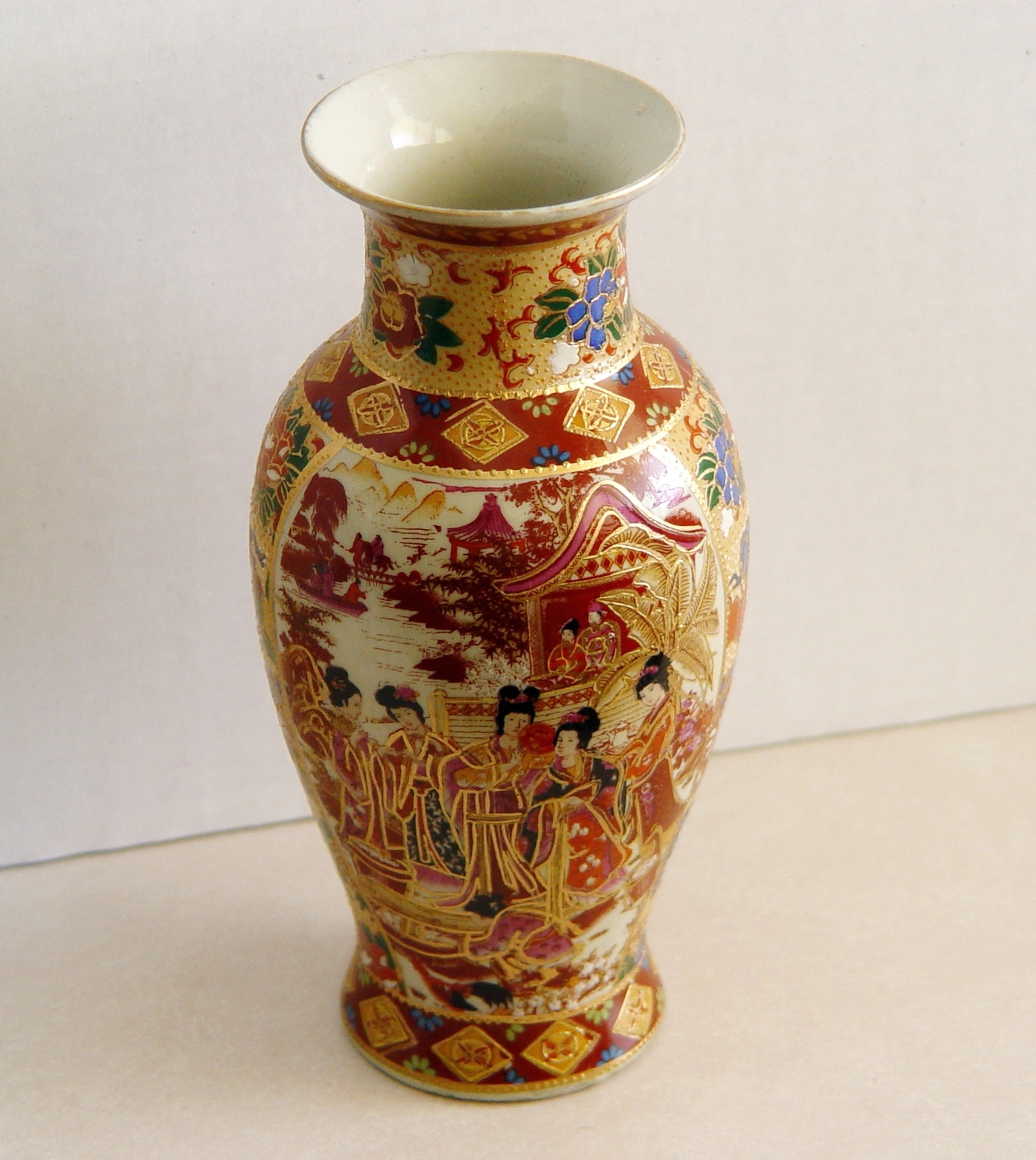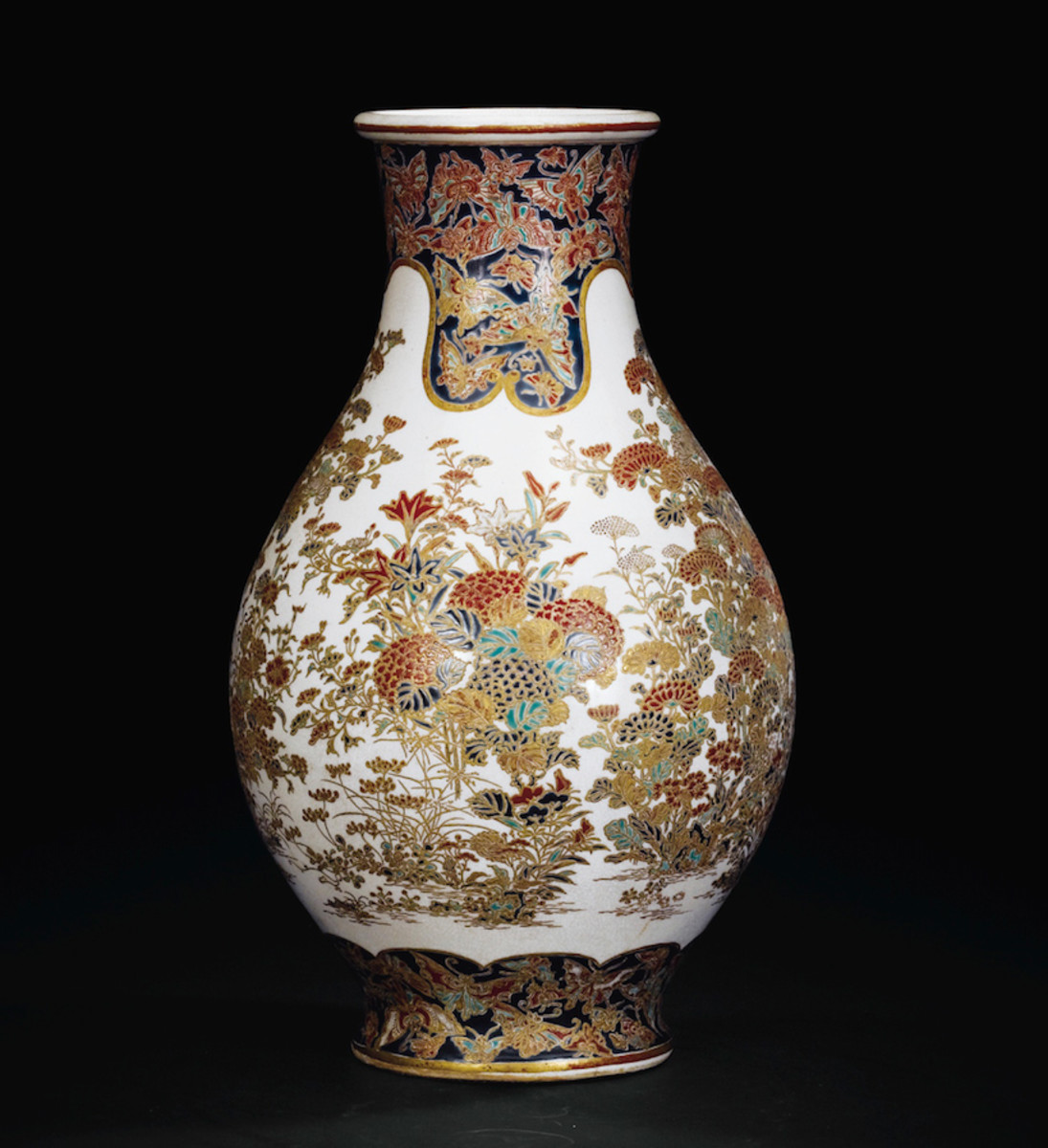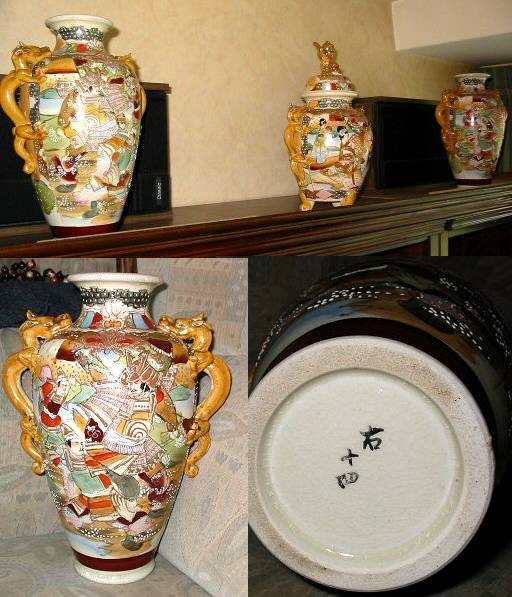
Vase. Mark Koshida. Date likely to be 1950s or later. Japanese Porcelain, Japanese Pottery
Two Korean potters brought traditions to this pottery style: Chin Jukan developed overglaze Satsuma porcelain while descendants of Boku Heii created a unique natural glaze. At the end of the Edo (1603-1868) and Meiji (1868-1912) periods, Satsuma became one of the most famous and highly sought-after types of Japanese pottery in Europe.

Large 19th Century Signed Japanese Imperial Satsuma Pottery Vase with Gosu Blue For Sale at 1stdibs
The Marks & makers data file gives you (at the moment) abou t 2000 marks and signatures of 500 makers of Satsumaware.; Examples of the work that each of these makers has produced or decorated can be found in the Makers: examples data file.; The Look it up data file is an extensive list of over 2,000 makers of Japanese ceramics. The names are written in both Latin script and kanji.

Large 19th Century Signed Japanese Imperial Satsuma Pottery Vase with Gosu Blue For Sale at 1stdibs
Japan/Made in Japan Juzan gama K KB KS Kawata sei Kawato Kissho Kitagawa Togei Kozan Kozan Gama "M" and "wreath" marks Maruku Maruyama Toki, SETO Maruto Mu Matsubara Matsueda Matsukawa, Dai Nippon Matsumura Matsushita Mineta Mokusen

Japanese Satsuma Pottery
Generic marks Just as with Western items Satsuma pottery often had words such as 'made' or 'artist' incorporated into the mark and can also be in combination. Some examples are given below. Satsuma: 薩摩 - occasionally in hiragana characters: さつま, or katakana : サツマ Satsuma (abbreviated): 薩广 Satsuma-yaki: 薩摩 焼 - Satsuma ware

How To Read Satsuma Marks Satsuma Pottery
This page lists some of the many maker's marks found on antique Japanese porcelain and ceramic objects including Arita porcelain, Kutani porcelain, Seto porcelain, Satsuma pottery and others. Listed are also some modern Japanese porcelain marks. We regularly update this page. Last updated: December 2023 Need more help?

Faux Early Porcelain Japanese Satsuma Vase Made in China Vases
A short tutorial on how to recognize and identify Japanese Satsuma pottery.Josh will take a quick look at the pottery itself, the glaze applied to the potter.

How To Read Satsuma Marks Satsuma Pottery in 2021 Satsuma, Japanese pottery, Pottery
Handle with care: Satsuma porcelain is delicate and should be handled with care. Always hold the piece with both hands and avoid touching the delicate areas of the design. Display in a safe place: Satsuma porcelain should be displayed in a safe place away from direct sunlight and heat sources.

How To Read Satsuma Marks Satsuma Pottery
Japanese pottery marks can provide valuable information about the origins, authenticity, and quality of a piece of pottery. By learning to recognize and decipher these marks, collectors and enthusiasts can gain a deeper understanding of Japanese pottery and its history. Types of Japanese Pottery Marks

1920s Japanese Raised Relief Japanese Satsuma Antique broken clay Asian pottery vase Home
Antique Japanese Satsuma Pottery, made under the Shimazu crest is highly collectible and valuable. Read more about the makers, pieces and history of Satsuma.

How To Read Satsuma Marks Satsuma Pottery
Sold for €500 via (October 2018). Estimated Reading Time: 10.23.18 In over 12,000 years of the Japanese tradition, few items have been considered more precious than finely crafted Japanese pottery.

Is My Satsuma Pottery Genuine? Satsuma Pottery
Satsuma pottery is the Western name for very collectable type of Japanese earthenware exported throughout the world since the Japanese Meiji period (1868-1912). It is named after the Satsuma provinces, but was made in many parts of Japan, notably in Kyoto.

Image result for most important satsuma artists marks Satsuma, Japanese ceramics, Japanese
Many of the Japanese makers marks on Satsuma porcelain or pottery are simply the name of the person who made the item, or a generic marking such as "Dai Nippon Satsuma". You may also find that there are no main markings, only Japanese numbers. These types of markings are more common on larger vases that form part of a set.

How To Read Satsuma Marks Satsuma Pottery
Geographical indications such as Satsuma or Satsuma Yaki (Satsuma work): to indicate that it is Satsuma pottery. More specific geographical indications are also found, such as Kyoto, Awata, Yokohama or Kutani. Usually it is placed after Dai Nippon, if present.

Shinzan Satsuma, Japanese Art, Marks, Language, Pottery, Culture, Architecture, Quick, Japan Art
The Issue With Satsuma Vase Maker's Marks For a lot of western ceramics, people rely on maker's marks, signatures, or serial numbers to help identify an authentic piece. The most valuable satsuma vases don't usually have any marks because of two reasons: a) there wasn't a single manufacturer or artist, and b) artists signing their vases didn't.
Japanese Satsuma Mark... Antiques Board
Satsuma ware (薩摩焼, Satsuma-yaki) is a type of Japanese pottery originally from Satsuma Province, southern Kyūshū.

Japanese Satsuma Pottery
Satsuma ware is a generic term for faience (soft-paste) ceramics originating from Satsuma Provence, a peninsula-shaped land mass at the southwest tip of Kyūshū island. The first ceramics made in this region date from the late 16th or early 17th century.